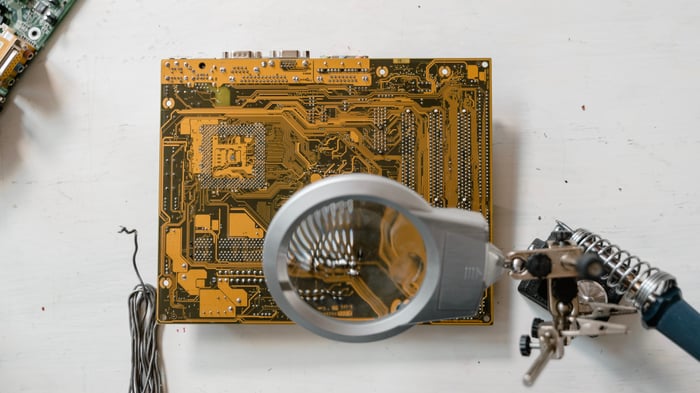Semiconductors, chips, and capacitors continue to experience unprecedented (but not unexpected) shortages worldwide in the aftermath of COVID-19. We covered the impact on motherboards back in February 2021, reporting on the large number of factories that had gone into hibernation or reduced their capacity.
However, the global semiconductor shortage didn’t start here — it’s been growing progressively more challenging for years. Wave after wave of electronic component shortages have hindered the market throughout 2018-2020.
Why is There a Chip Shortage? Demand Is Stressing Supply.
New orders have been steady, but fabrication has often fallen short. The fact of the matter is that there just haven’t been enough semiconductors, chips, and capacitors to keep up with demand. The pandemic threw several additional wrenches into the works that only exacerbated matters for businesses in the electronic component supply chain. An IPC survey in later February of 2021 showed that 84% of electronics manufacturers expressed concern about the impact of COVID-19 on their operations. Here was another critical insight:
“Roughly 65 percent of respondents reported being told by their suppliers that there will be delays in shipments due to COVID-19. Companies in this situation report they are being told to expect delays of three weeks, on average.”
— IPC Survey: Impact of COVID-19 on Electronics Manufacturers
These delays have become commonplace, and lead times are only growing longer. This is not really a problem with specific material formulation, as can sometimes happen when technology advances but mass manufacturing hasn’t caught up, but more of a complex supply and demand issue.
Many fabricators have experienced capacity trouble with the health crisis. Some facilities have been able to continue operating in a partial capacity, but unfortunately, others have also had to close down entirely for extended periods. While many are now reopening and re-ramping production, the supply chain delays have compounded and supply has not caught up.
In the meantime, demand for electronics has only increased. Consumer devices, new medical equipment, and more industry demands have put extreme pressure on chipmakers and component suppliers to make even more at a time that it was hard to even maintain existing production capacity.
The Path Out of the Global Semiconductor Shortage
Supply can and will improve through adjustments in the supply chain as we emerge from the pandemic. Demand can be more difficult to predict.
McKinsey predicted at the height of the pandemic that demand for semiconductors would eventually relax in the consumer markets, since remote workers went out to “buy all the home-office electronics that they need for remote work in 2020, lowering demand for next year.” However, in June of 2021, the president and CEO of SIA (Semiconductor Industry Association) indicated in an industry report that:
“Global demand for semiconductors remained high in April, as reflected by rising sales across a range of chip products and throughout each of the world’s major regional markets. The global chip market is projected to grow substantially in 2021 and 2022 as semiconductors become increasingly integral to the game-changing technologies of today and the future.”
— John Neuffer, SIA president and CEO
This would seem to indicate a continued pressure from the demand side to ramp supply up beyond previous levels. Lead times continue to create puzzles for companies that rely on the electronics supply chain for semiconductors, chips, and capacitors.
A Resilient Global Network Can Help
This all may sound foreboding, but reports also indicate that the semiconductor industry is projected to increase in value by 11% between 2020 and 2027, so there’s reason for optimism. The early portion of that timeline is likely to be mixed in terms of results, due to the current and ongoing global semiconductor shortage. You have the power to place your company in a position to succeed with careful planning and an increased focus on agility and supply chain resilience.
A flexible global network of suppliers is an ideal resource at a time like this. Feel free to explore our robust and highly vetted hybrid line card as you evaluate your options, and remember that all of your competitors are experiencing the same problems. Anything you can do to stabilize your supply lines is both an immediate differentiator and a competitive advantage.


















